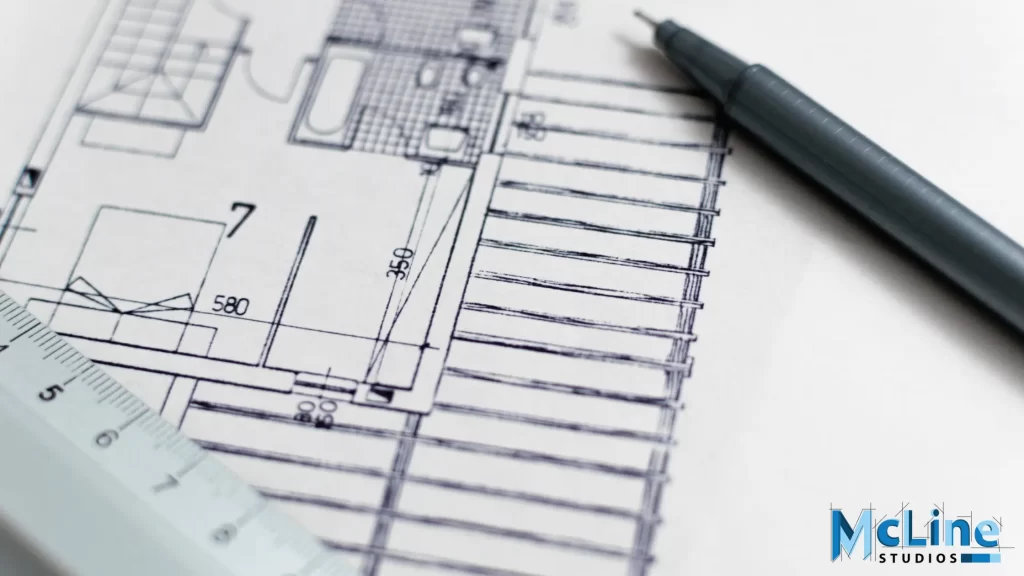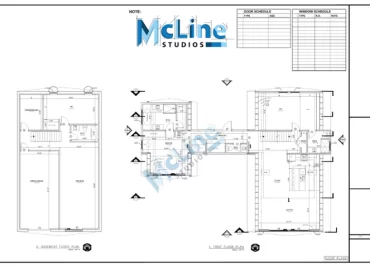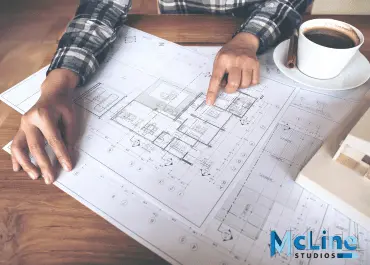Fabrication drawings are the blueprint of precision in manufacturing, serving as the essential guide for transforming design concepts into tangible reality. These detailed illustrations provide a comprehensive visual representation of the components, dimensions, and specifications necessary for constructing a wide array of structures, machinery, and products.
Crafted with meticulous attention to detail, fabrication drawings bridge the gap between design intent and actual production, ensuring accuracy in fabrication processes.
Typically created by skilled draftsmen or CAD technicians, these drawings encompass intricate details such as material specifications, welding symbols, and assembly instructions. Serving as a vital communication tool between designers and fabricators, they enhance collaboration and streamline the manufacturing workflow.
Whether in the construction industry, aerospace, or manufacturing plants, fabrication drawings play a pivotal role in ensuring precision, consistency, and adherence to standards throughout the production lifecycle. In essence, they are the cornerstone of effective and efficient fabrication, facilitating the seamless translation of innovative ideas into tangible, high-quality products.
What are Fabrication Drawings?
Fabrication drawings, also known as detail drawings, are a type of technical drawing that provides detailed information for the manufacturing, assembly, and construction of a product or structure. These drawings are a crucial part of the design and engineering process, serving as a communication tool between designers, engineers, and fabricators.
Fabrication drawings include detailed information about the dimensions, materials, tolerances, and other specifications required for the construction or fabrication of a product. This information is often presented in a graphical format with symbols, notes, and labels.
Types of Fabrication Drawings
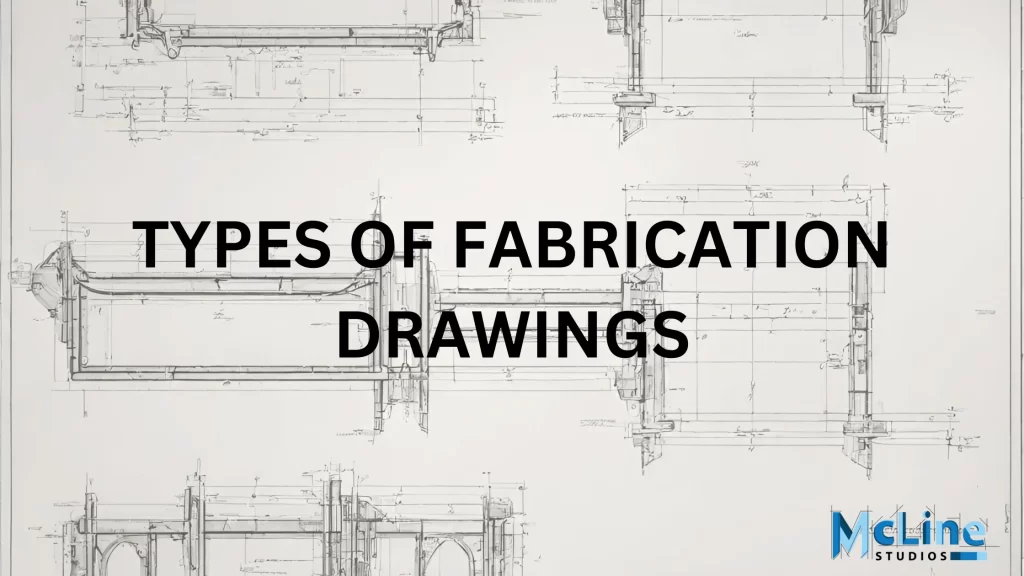
Fabrication drawings are detailed illustrations that provide the necessary information for manufacturing and assembling a product. The type of fabrication drawing required depends on the nature of the project and the specific requirements of the manufacturer. Here are some common types of fabrication drawings:
Assembly Drawings
Assembly drawings stand as the foundational blueprint that brings together different components to create a unified product. In the world of fabrication drawing services, assembly drawings serve as the keystone for effective collaboration between design and fabrication teams. These drawings provide a comprehensive visual representation of how individual components fit together, offering crucial information on dimensions, materials, and assembly instructions.
For companies offering fabrication drawing services, creating precise assembly drawings is paramount. This precision ensures that each part of the assembly meets the specified tolerances and dimensions, ultimately contributing to the overall quality and functionality of the final product.
Detail Drawings
Detail drawings zoom in on specific components or parts, revealing the intricacies that might be overlooked in broader assembly drawings. Steel fabrication drawings, in particular, heavily rely on detailed drawings to communicate specific dimensions, tolerances, and material specifications for each steel component.
The importance of detail drawings extends beyond precision; they play a critical role in guiding the fabrication process, ensuring that each component is manufactured to the exact specifications laid out in the design phase. In the world of fabrication drawing services, attention to detail is not merely a virtue but a necessity.
Welding Drawings
In fabrication processes involving welding, welding drawings take center stage. These drawings provide explicit details on the type of welds, their dimensions, and precise locations where welding is required. In the steel fabrication drawing domain, welding drawings contribute not only to the structural integrity of the final product but also to safety and compliance with industry standards.
Welding fabrication drawings are indispensable for welders and fabricators. They guide the welding process, ensuring that each weld meets the necessary standards for strength and durability. As safety is paramount in welding processes, these drawings also play a crucial role in preventing structural failures and accidents.
Shop Drawings
Shop drawings serve as a bridge between design concepts and the production floor. In the context of fabrication drawing services, shop drawings provide a detailed representation of the product, offering information on dimensions, materials, and fabrication instructions tailored for the shop floor.
For structural steel shop drawings, this translation of design intent into actionable instructions is particularly vital. Fabricators use shop drawings to navigate the intricacies of the manufacturing process, enhancing both efficiency and accuracy. The clarity provided by shop drawings ensures that every step in the production process aligns with the design specifications.
Cutting Lists
Within the fabrication drawing services, cutting lists emerge as tools for optimizing material usage. These lists outline the dimensions and quantities of materials needed for fabrication, contributing to efficiency and sustainability.
In the steel fabrication drawing sector, cutting lists play a crucial role in guiding fabricators on how to cut raw materials with minimal waste. This not only enhances cost-effectiveness but also aligns with the growing emphasis on sustainable practices in manufacturing.
Importance of Fabrication Drawings
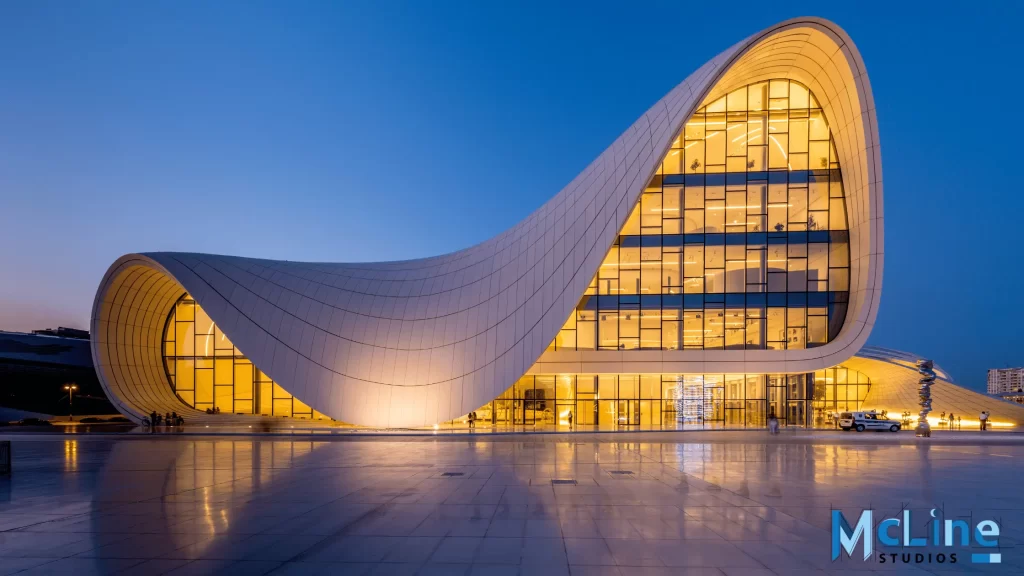
Fabrication drawings are a crucial component in the manufacturing and construction industries. These drawings provide detailed information and instructions for the fabrication and assembly of components, structures, or products. Here are several reasons why fabrication drawings are important:
- Communication of Design Intent: Fabrication drawings serve as a means of communication between designers, engineers, and fabricators. They convey the design intent, including dimensions, tolerances, materials, and other specifications necessary for the accurate realization of the intended product.
- Precision and Accuracy: Fabrication drawings provide precise and accurate measurements, ensuring that the final product is built to the exact specifications outlined in the design. This helps to eliminate errors and discrepancies that may arise during the fabrication process.
- Quality Assurance: Fabrication drawings are essential for quality control. They serve as a reference point for inspectors and quality assurance personnel to verify that the fabricated components or structures meet the required standards and specifications.
- Cost Estimation: Fabrication drawings are often used for cost estimation purposes. Fabricators can assess the materials, labor, and other resources required to produce the item accurately. This helps in preparing cost estimates and bids for the fabrication project.
- Assembly Guidance: Fabrication drawings provide step-by-step instructions for the assembly of components. This is particularly important for complex structures or products, ensuring that the assembly process is efficient and that each part fits together correctly.
- Material and Process Specifications: The drawings include information about the materials to be used and the fabrication processes to be employed. This is critical for ensuring that the final product meets the required strength, durability, and other material-specific characteristics.
- Regulatory Compliance: Fabrication drawings often include information to ensure compliance with industry standards, codes, and regulations. This is crucial for products or structures that need to meet specific safety or regulatory requirements.
- Documentation and Record-Keeping: Fabrication drawings serve as important documentation throughout the entire life cycle of a product or structure. They provide a detailed record of the design and fabrication process, aiding in maintenance, repairs, and future modifications.
- Communication with Stakeholders: Fabrication drawings are not only useful for communication within the production team but also for external stakeholders such as clients, architects, and project managers. They help convey the design concept and progress throughout the fabrication process.
Conclusion
In conclusion, the significance of accurate and detailed fabrication drawings cannot be overstated in the realm of design and manufacturing. As we have explored throughout this article, these drawings serve as the blueprint for turning creative concepts into tangible, high-quality products.
As you navigate the intricate process of bringing your ideas to life, it is crucial to partner with a trusted and experienced team to ensure the seamless translation of design into reality. That’s where McLine Studios emerges as a standout choice for fabrication drawing services. With a proven track record of excellence, McLine Studios combines technical expertise with creative insight to deliver meticulous and accurate fabrication drawings.
By choosing McLine Studios, you not only invest in a service but also in a collaborative partnership that prioritizes your project’s success. Their commitment to precision, innovation, and client satisfaction sets them apart in the industry. Let McLine Studios be the bridge between your vision and its flawless execution, providing you with the confidence that your fabrication drawings are in the hands of skilled professionals dedicated to turning your ideas into reality.

